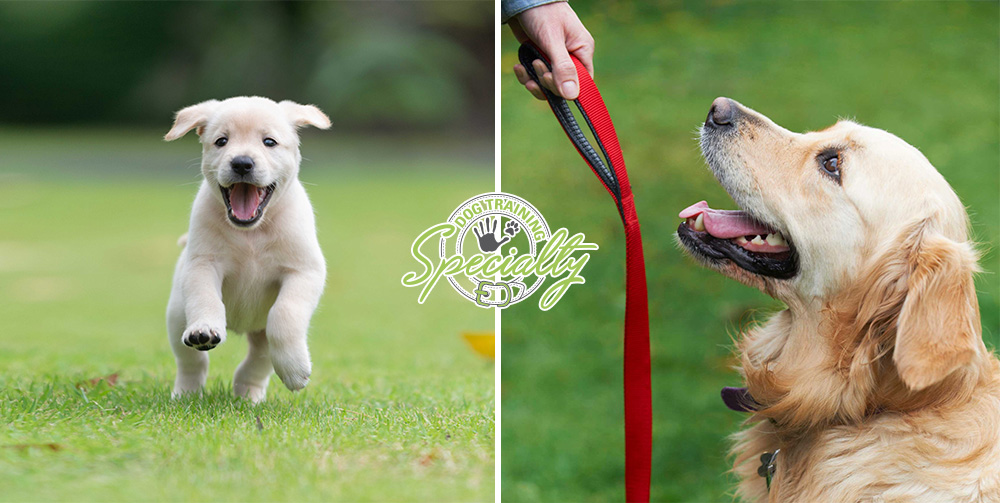Unlock Your Canine's Prospective: Proven Pet Training Techniques for Success
Efficient pet dog training is a nuanced process that hinges on understanding canine actions and utilizing scientifically backed techniques. By including favorable reinforcement, establishing clear commands, and focusing on socializing, pet owners can grow an effective connection with their family pets.
Comprehending Pet Behavior
Understanding canine actions is important for reliable training and promoting a favorable partnership between pet dogs and their owners. A thorough grasp of canine body movement, articulations, and social interactions is essential for acknowledging their demands and feelings. Canines communicate mainly with non-verbal signs; for example, a wagging tail might suggest exhilaration, while pinned ears can signal concern or entry.

Additionally, ecological variables play a significant role fit a pet's actions. Changes in routine, brand-new surroundings, or the existence of unfamiliar people can lead to stress and anxiety or anxiety in pet dogs. Recognizing these triggers makes it possible for proprietors to reduce negative reactions and develop ideal training approaches.
Ultimately, a deep understanding of pet actions lays the structure for effective training approaches, improving both actions and the general bond between the dog and its proprietor. Dog training. This understanding is essential for fostering a well-adjusted, satisfied canine friend
Favorable Reinforcement Strategies
Reliable training counts heavily on favorable reinforcement strategies, which have actually been revealed to yield considerable results in shaping desired habits in dogs. This strategy includes compensating a pet dog for displaying particular actions, consequently increasing the chance that these actions will certainly be duplicated. Rewards can take different kinds, including treats, appreciation, toys, or playtime, depending on what inspires the specific dog.

It is important to gradually phase out benefits as the dog finds out the behavior, transitioning to periodic support. This approach keeps the habits with time while protecting against dependence on continuous rewards. By concentrating on favorable support, trainers can grow a relying on partnership with their canines, promoting a cooperative and healthy training setting that boosts overall obedience and performance.
Developing Regular Commands
A basic aspect of effective canine training is the facility of constant commands. Consistency in commands is essential for effective interaction in between the pet dog and the fitness instructor. When commands are uniform, pets learn to connect particular words with wanted behaviors, which accelerates the training process and boosts understanding.
To develop constant commands, it is essential that all household participants use the exact same terminology and motions. For instance, if one individual uses "sit" while one more states "sit down," it can develop confusion for the dog. Select clear, unique words for commands and ensure everybody entailed in the canine's training complies with these selections.
Reinforce commands with regular method, guaranteeing that the pet dog gets adequate possibilities to respond properly. When a pet dog successfully adheres to a command, prompt favorable reinforcement should follow.
Last but not least, hold your horses. Establishing consistent commands takes some time and initiative. With commitment and clarity, you will certainly help your pet dog develop a solid understanding of assumptions, inevitably bring about a well-behaved buddy.
Socializing and Direct Exposure
Socializing a pet is crucial for promoting helpful hints a well-adjusted and positive buddy. This process entails exposing your pet to a selection of environments, people, and other animals to establish their social abilities and flexibility. Early socialization, preferably in between the ages of three to fourteen weeks, is important, as it prepares for a canine's future behavior.
During socialization, goal to give favorable experiences in various setups, such go to the website as parks, busy streets, and homes with other animals. Present your dog to various stimuli, consisting of sounds, views, and scents, guaranteeing that each encounter is fulfilling. This direct exposure helps minimize concern and anxiousness, leading the way for a much more durable pet dog.
Involving in regulated group play sessions with various other pets can additionally enhance social abilities, educating your pet ideal communications and borders. Focusing on socialization will substantially add to your dog's total happiness and habits throughout their life.
Conquering Common Educating Challenges

Another constant issue is disturbance. Pet dogs may have a hard time to focus in hectic or unfamiliar settings. Progressively desensitize your canine to disturbances by starting training in a peaceful environment and slowly presenting more stimuli as they come to be skilled (Dog training). Positive support techniques, such as treats and appreciation, can maintain motivation and emphasis.
Additionally, behavioral problems like leaping or too much barking can become aggravating. Address these by showing different actions, such as resting calmly when greeting guests. Consistency and persistence are vital; enhance wanted behaviors consistently and avoid scolding, which can result in confusion.
Finally, recognize that each pet dog is one-of-a-kind, and training timelines may vary. Tailor your method to your pet dog's private requirements, and seek expert assistance if required. With determination and the best techniques, conquering these difficulties can result in a well-trained, pleased canine companion.
Conclusion
Finally, opening a pet dog's prospective necessitates a comprehensive strategy that includes an understanding of canine habits, the application of positive reinforcement strategies, and the facility of constant commands. Early socialization and direct exposure to varied atmospheres further enhance a pet's versatility and confidence. By addressing usual training difficulties with tailored approaches and patience, a participating and harmonious partnership between dog and trainer can be promoted, ultimately causing a well-behaved friend efficient in thriving in numerous situations.
Reliable pet dog training is a nuanced process that pivots on understanding canine actions and employing medically backed techniques.Understanding pet dog behavior is necessary for effective training and cultivating a positive connection in between canines and their proprietors.Effective training counts heavily on favorable support methods, which have actually been shown to produce significant results in forming desired habits in pets. When commands are uniform, pet dogs learn to connect details words with desired habits, which increases the training process and improves understanding.
In verdict, unlocking a canine's possible necessitates an extensive strategy that incorporates an understanding of canine habits, the application of favorable support techniques, and the establishment of constant commands.